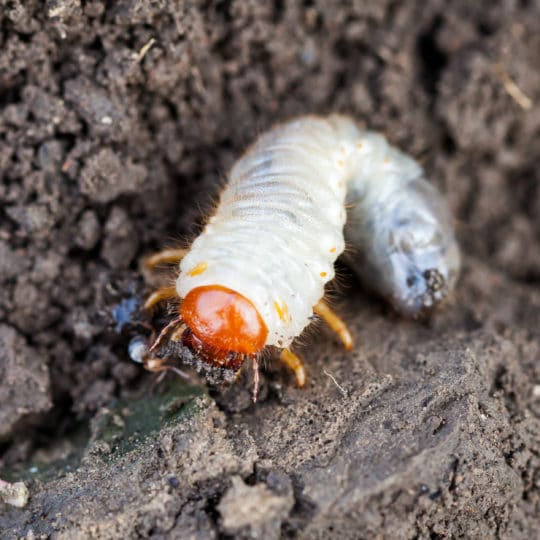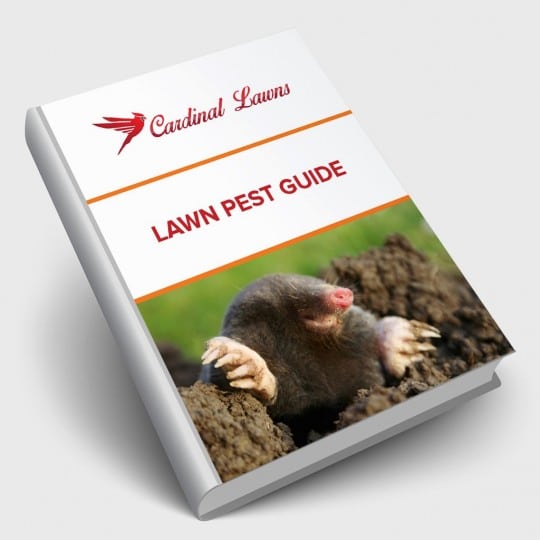Six Most Common Lawn Pests
Plus Prevention and Treatment Options
Posted
May 21, 2020

If you’ve been outside lately, whether working in your lawn or garden or simply walking around a grassy area, you’ve likely encountered a few lawn pests. Like you, they look for the best place to take shelter, eat, and raise their offspring. Given the right conditions, they may choose your lawn next and cause irreversible damage. Here are some of the most common lawn pests and ways to deal with them.
Types of Lawn Pests
There are different categories of lawn pests, from large rodents to tiny insects, and each can do a lot of damage no matter their size. These categories can be broken down even more into pests that feed on plants and grass above the surface and ones that burrow below to feast on roots and other subterranean fares. This group may be harder to see, but you’ll soon notice the damage they incur on your grass and plants.
Common Lawn Pests: Rodents
Some of the larger lawn pests you’ll have to deal with are easily noticeable on the surface if you catch a glimpse before they return to their underground burrow. Chances are you’ll notice the path they leave behind while searching for food.
Moles. The first thing you may notice is the mounds of soil and raised ridges running across your yard. These are the feeding tunnels and entrance/exit for moles looking for worms, grubs, and other insects. They tend to prefer the damp soil of overwatered lawns, so prevention may be as easy as not watering too much. Traps and other pesticides are also available to help save your yard.
Voles. Similar to moles, voles also create feeding pathways, only above ground. They could be hidden under snow, but you’ll see round areas of dead grass in early spring. Fill in trails with compost or soil and treat the area with castor oil to help prevent them from returning.
Common Lawn Pests: Insects
Tiny insects may be harder to see at first, but signs of their damage are more recognizable.
Chinch Bugs. Tiny and black with an hour-glass shape, it’s hard to notice these surface feeders, but look closely on a hot day and you may see a large group of them scurrying around. Not only do they feed on grass sap, but they inject saliva into the blades causing widespread damage if not controlled. Dethatch your lawn to limit their hiding places and use preventative methods of pest control.
Sod Webworms. Tiny wheat-colored moths may be flying around while you mow your lawn. This is usually an indication their larvae are feeding on your grass at night. You may not notice a problem until the grass goes dormant under drought or heat stress.
Billbugs. After spending the winter in leaf litter along the edge of lawns, they return in spring to lay their eggs in the grass. The newly hatched grubs feast on grass, eventually killing it.
White grubs. Beetle larvae hatch in the summer and eat grass roots all fall. They can even survive the winter buried deep beneath the soil. Every year, the infestation cycle continues unless acted upon. These grubs then grow into Japanese beetles, which become very noticeable all over your yard. To inspect for grubs, pull a dead section of grass up. If it rolls back easily, you’ll see the tiny pests resting underneath.
Pest Prevention and Treatment
Some insects are good for your lawn, and healthy lawns can even withstand a few pests. However, when signs of damage are noticeable, it means the pests are winning. Certain pests can be prevented with granular pest control products. Others need more advanced options, like growing a pest-resistant grass.
If you don’t see the pest, but the patches of dead grass indicate something is not right, there are several ways to test for infestations.
- Pour soapy water on a patch of lawn and wait to see if any bugs emerge to escape the suffocating soap and a watery death.
- Place an empty paint or food can into the soil around a problem area, about two to three inches deep. Fill the can with water and see if any insects start floating on the surface.
While the best defense against pests is maintaining a healthy lawn, no lawn is pest-proof. Determine if your pest problem is due to environmental issues, like extreme weather patterns or changes, and consider all available options. For more options, talk to a lawn care professional at Cardinal Lawns and get ahead of the pest problems before they take over your beautiful yard.

Download Your FREE Lawn Pest Guide
Pests become most prevalent during the heat and humidity of summer. Take some time to learn about the signs of infestations before any damage can be caused to your landscape. This handy guide will teach you how to spot common lawn pests and how to keep them from causing harm to you and your property.